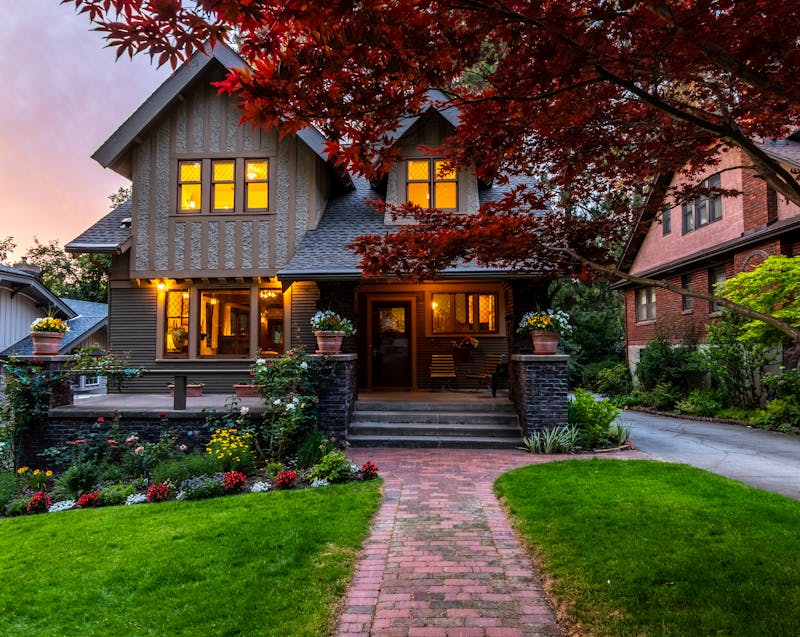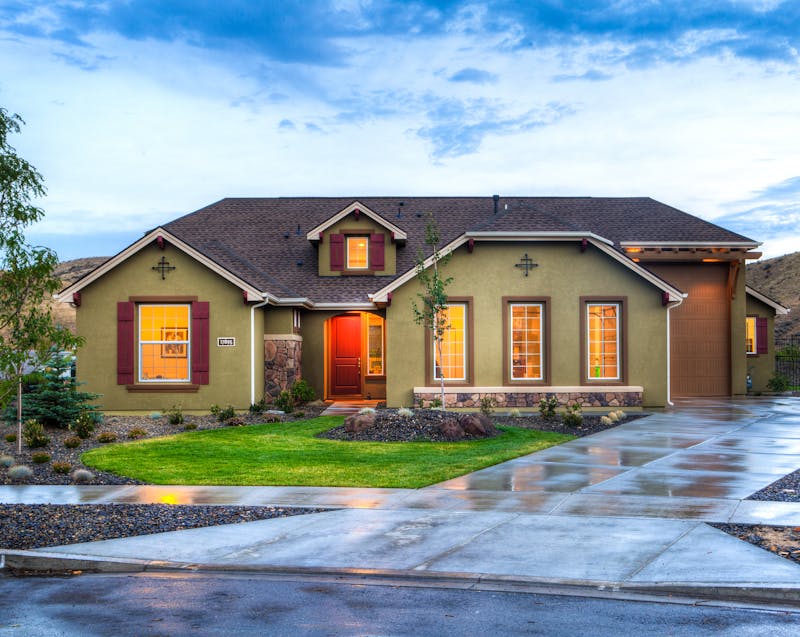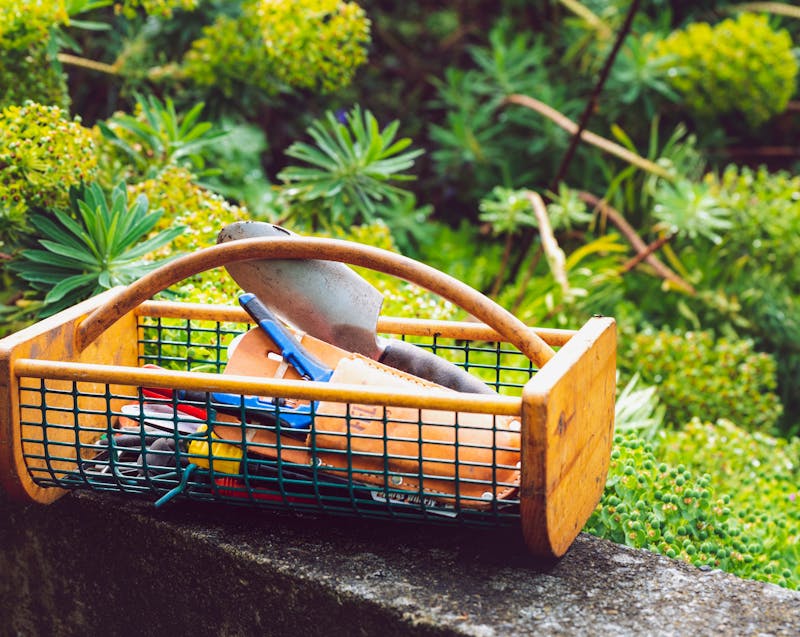
Your front yard is more than just a patch of grass in front of your house—it’s the first impression visitors, neighbors, and potential buyers get of your home. Whether you’re preparing to sell or simply want to enjoy a more inviting outdoor space, front yard landscaping can dramatically boost your curb appeal without breaking the bank.
The good news? You don’t need a massive budget or professional landscaping degree to create a stunning front yard. With the right combination of planning, plant choices, and design principles, you can transform your outdoor space into a warm, welcoming, and beautiful extension of your home.
In this guide, we’ll cover essential tips for creating an eye-catching front yard, from choosing the right plants to incorporating decorative elements. You’ll also discover how to maintain your yard efficiently and design it for long-term value.
Why Curb Appeal Matters for Homeowners
Before diving into landscaping tips, it’s worth understanding why curb appeal plays such a significant role in your home’s overall appeal and value.
Curb appeal influences how people perceive your property before they even step inside. For homeowners, an attractive exterior can:
- Increase property value – A well-landscaped front yard can raise a home’s value by up to 10–15% according to real estate studies.
- Improve resale potential – Buyers are more likely to request a viewing if the exterior looks cared for and inviting.
- Enhance neighborhood reputation – A neat, beautiful front yard contributes positively to the look and feel of your street.
- Boost personal enjoyment – Coming home to a pleasant view can be a mood booster after a long day.
Your front yard landscaping is essentially your home’s handshake—make sure it’s warm, confident, and memorable.
Planning Your Front Yard Landscaping Project
Before you start planting flowers or laying down mulch, a solid plan will help you avoid costly mistakes and achieve a cohesive look.
A well-thought-out landscaping plan includes:
- Assessing your yard’s conditions – Consider sunlight patterns, soil type, slope, and drainage issues.
- Identifying your style – Decide whether you want a modern, rustic, tropical, or classic look.
- Setting a budget – Landscaping costs can range widely; having a budget helps prioritize essentials.
- Choosing a focal point – A tree, a pathway, or a decorative feature can serve as the centerpiece.
- Creating a maintenance plan – Consider how much time you can realistically spend caring for your yard.
Taking the time to map out your vision ensures your efforts lead to a balanced and attractive design that enhances your home’s exterior for years to come.
Choosing the Right Plants for Lasting Beauty
One of the most exciting parts of front yard landscaping is selecting the plants that will bring your design to life. Your choices should be guided by climate, maintenance needs, and the visual style you’re aiming for.
Tips for selecting plants:
- Think year-round appeal – Use a mix of evergreens, perennials, and seasonal blooms so your yard looks attractive in every season.
- Consider scale and proportion – Taller shrubs and trees should be placed toward the back or sides, with smaller plants in the foreground.
- Select low-maintenance varieties – If you have a busy schedule, opt for plants that don’t require constant pruning or watering.
- Incorporate native plants – They’re more adaptable to your region’s weather and often require less care.
Examples of great front yard plants:
- Evergreens: Boxwood, juniper, holly
- Flowering shrubs: Hydrangea, azalea, spirea
- Perennials: Lavender, hosta, daylilies
- Ground covers: Creeping thyme, sedum, vinca
By combining texture, color, and height, your plant selection can create depth and visual interest that instantly elevates curb appeal.
Designing a Welcoming Pathway

Your front yard pathway is more than a way to get to your front door—it’s an invitation to enter. A thoughtfully designed walkway adds structure and charm to your landscape.
Pathway design tips:
- Choose durable materials – Pavers, brick, flagstone, or gravel can all provide long-lasting beauty.
- Make it proportional – A too-narrow path can feel cramped; aim for at least 3 feet in width.
- Add curves – Slight curves add elegance and a sense of discovery.
- Use edging – Stone, metal, or plant borders can define the path and keep it neat.
Consider lining your pathway with low lighting for safety and nighttime appeal. Solar-powered lights are an eco-friendly option that adds charm without increasing your energy bill.
Adding Color with Seasonal Blooms
Seasonal flowers are the quickest way to add bursts of color and refresh your front yard landscaping. Even a few strategically placed planters can make a big difference.
Seasonal planting ideas:
- Spring: Tulips, daffodils, pansies
- Summer: Petunias, marigolds, zinnias
- Fall: Chrysanthemums, asters, ornamental kale
- Winter: Camellias, hellebores, evergreen arrangements
Mixing annuals with perennials allows you to refresh certain areas each season without redoing your entire yard. If you prefer a low-maintenance approach, use flowering shrubs that bloom in different seasons for continuous color.
Front Yard Landscaping Tips for Small Spaces
Not every homeowner has a sprawling lawn, but even small front yards can make a big impact with the right design approach.
Maximizing small front yards:
- Vertical gardening – Use trellises, wall planters, and climbing plants to draw the eye upward.
- Compact shrubs – Choose dwarf varieties that won’t overwhelm the space.
- Minimalist pathways – Simple stepping stones or a narrow gravel path keep the design open.
- Multi-purpose features – A bench with built-in planters can provide seating and greenery.
The key is to avoid overcrowding. Strategic placement of plants and features can make a small yard feel spacious and intentional.
Incorporating Lighting for Nighttime Appeal
Good lighting not only enhances safety but also highlights your landscaping after sunset. A well-lit front yard can make your home stand out in the evening.
Lighting options:
- Path lights – Illuminate walkways for safe navigation.
- Spotlights – Highlight trees, sculptures, or architectural features.
- String lights – Add a cozy, decorative touch to porches or garden areas.
- Motion-sensor lights – Improve security while saving energy.
Position lights to create layers of illumination, balancing functionality and aesthetics for a polished nighttime look.
Enhancing Your Entrance
Your front porch or entryway is the transition between the outside world and your home’s interior. Making it warm and inviting can tie your entire front yard landscaping together.
Ways to enhance your entrance:
- Add potted plants or topiaries – Symmetry on either side of the door can look elegant.
- Upgrade your front door – A fresh coat of paint or a new door design can be transformative.
- Incorporate seating – A small bench or chair creates a welcoming atmosphere.
- Decorate seasonally – Wreaths, lanterns, and doormats can be switched out for seasonal charm.
A well-styled entrance encourages guests to linger and makes your home appear more cared for.
Low-Maintenance Landscaping Ideas for Busy Homeowners
Not everyone has the time to maintain a front yard every weekend. Fortunately, there are plenty of landscaping choices that require minimal upkeep while still looking beautiful.
Low-maintenance strategies:
- Drought-tolerant plants – Succulents, ornamental grasses, and native species need less watering.
- Mulch beds – Mulch helps suppress weeds and retain soil moisture.
- Automatic irrigation – A timed sprinkler or drip system can keep plants healthy without daily watering.
- Hardscaping – Patios, rock gardens, and gravel areas reduce lawn space and maintenance needs.
Choosing designs and materials that naturally resist wear will save you time and effort while keeping your yard looking fresh.
Boosting Property Value with Front Yard Landscaping
Landscaping isn’t just about beauty—it’s also a smart investment. A thoughtfully designed front yard can significantly increase your home’s resale value.
Value-boosting tips:
- Keep the lawn healthy and green.
- Use landscaping to highlight your home’s best architectural features.
- Install an irrigation system for consistent upkeep.
- Add functional features like walkways, seating areas, or lighting.
Potential buyers are more likely to remember—and make offers on—homes with well-maintained and appealing exteriors.
Maintaining Your Front Yard for Long-Term Appeal
Once you’ve invested time and effort into your front yard landscaping, regular maintenance ensures it stays beautiful.
Essential maintenance tasks:
- Mow and edge your lawn regularly.
- Prune shrubs and trees to maintain shape.
- Remove weeds before they spread.
- Refresh mulch once or twice a year.
- Inspect and clean outdoor lighting fixtures.
Consistent care not only keeps your yard looking fresh but also prevents costly repairs or replacements later.
Using Hardscaping to Define Your Front Yard’s Character

Hardscaping involves the solid, non-plant features in your outdoor design—think walkways, retaining walls, paved areas, and decorative accents. These elements serve as the backbone of your landscaping, adding form, durability, and visual structure to the space. When thoughtfully chosen, materials such as natural stone, brick, or concrete can set the tone for your yard’s overall style, whether you’re aiming for a sleek contemporary feel, a cozy cottage look, or a timeless traditional design. By blending hardscaping with greenery, you create a balanced and visually engaging front yard.
Hardscaping ideas to consider:
- Stone or brick borders to frame flower beds and keep grass from encroaching.
- Decorative retaining walls to manage slopes while adding depth.
- Garden edging made from steel, wood, or pavers for clean separation between lawn and plant beds.
- Water features, such as fountains, to create a focal point.
- Driveway upgrades using patterned concrete or cobblestone for elegance.
Hardscaping works best when balanced with greenery, ensuring your front yard feels welcoming rather than overly structured.
Final Thoughts: Your Front Yard as a Reflection of Your Home
Front yard landscaping is more than just an aesthetic upgrade—it’s a statement about your home and lifestyle. By combining thoughtful planning, smart plant choices, and functional design elements, you can create a space that’s both beautiful and easy to maintain.
Whether you start small with seasonal flowers or commit to a full redesign, every improvement you make enhances curb appeal, boosts property value, and gives you a front yard you’ll be proud to come home to.

